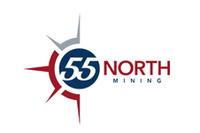Atlantic Gold Releases Additional Drill Results at the 149 Deposit
Atlantic Gold provided updated drill results for programs of diamond drilling to further define gold mineralization of the 149 gold deposit.
Atlantic Gold Corporation (TSXV:AGB) provided an update of drill results for recently completed programs of diamond drilling to further define gold mineralization in the Limb and Axis zones of the 149 gold deposit, recently discovered as part of the Corridor Regional Program.
As quoted in the press release:
Atlantic’s producing Touquoy gold mine and future satellite development deposits at Beaver Dam and Fifteen Mile stream lie within the Moose River corridor, a geologically prospective 45 kilometers trend underlain by the Moose River formation, a unit composed of a sequence of folded argillite and greywacke which hosts the known gold mineralization.
The 149 Deposit was discovered by traverses of widely-spaced diamond drilling testing favorable interpreted geological and geophysical targets and historical anomalous drill hole results as part of the Phase 4 corridor regional program which was initiated in 2018 to evaluate the under-explored and geologically prospective Moose River corridor. Encouraging initial results were followed-up and shallow mineralization was intersected over a strike length of 350 meters.
Additional infill drilling identified two zones of gold mineralization: a shallow, generally higher grade Axis zone in the core of a tight anticlinal fold which dips 60-75° to the north and a thicker, but lower grade, Limb zone on the over-turned limb of the anticline. The mineralized zones were extended to over 475 meters in strike length and were still open to the east.
In November-December 2018, additional drilling was completed to extend the higher grade Axis zone to depth and to follow the Limb zone closer to surface. A total of 2,497 meters of diamond drilling was completed in 21 drill holes.
Visual mineralization (carbonate alteration, pyrrhotite banding, minor quartz veining and specks of visible gold) was intersected in targeted zones and is consistent with the style of mineralization that previously returned significant gold grades.
Assay results received to date confirm that the lower grade, disseminated Limb zone mineralization extends to surface but also is open at depth. Narrow zones of higher-grade argillite hosted gold mineralization do occur within the thicker disseminated mineralization.
Results also confirm that the Axis zone mineralization continues from surface to depths of approximately 125 meters vertical and is open at depth. The argillite hosted disseminated mineralization within the Axis zone is also accompanied by high-grade intersections associated with broad zones of anomalous pyrrhotite and carbonate alteration, but generally devoid of the quartz veining seen in the Fifteen Mile stream deposits.
The mineralized zone has been traced over approximately 500 meters, with closely spaced 25 meters fences of diamond drilling over a strike length of 300 meters between Section 14400E to 14700E and further wider spaced drilling which has intersected mineralization over an additional 200 meters to Section 14900E. Airborne geophysical data suggests the structure continues to the east; to date insufficient drilling has been completed to determine the eastward extent of the 149 deposit mineralization.
Additional infill drilling will be required to better evaluate the eastern end of this zone and to continue to test the down dip extension of the mineralization. Planning has commenced for this program, likely to commence in early February.
Aeromagnetic interpretation also indicates the potential for similar geological settings to be repeated further to the east and additional reconnaissance-spaced drilling will be undertaken to test these zones.




